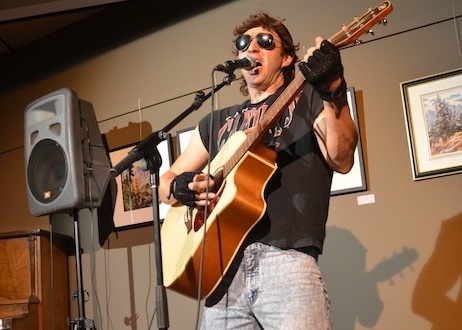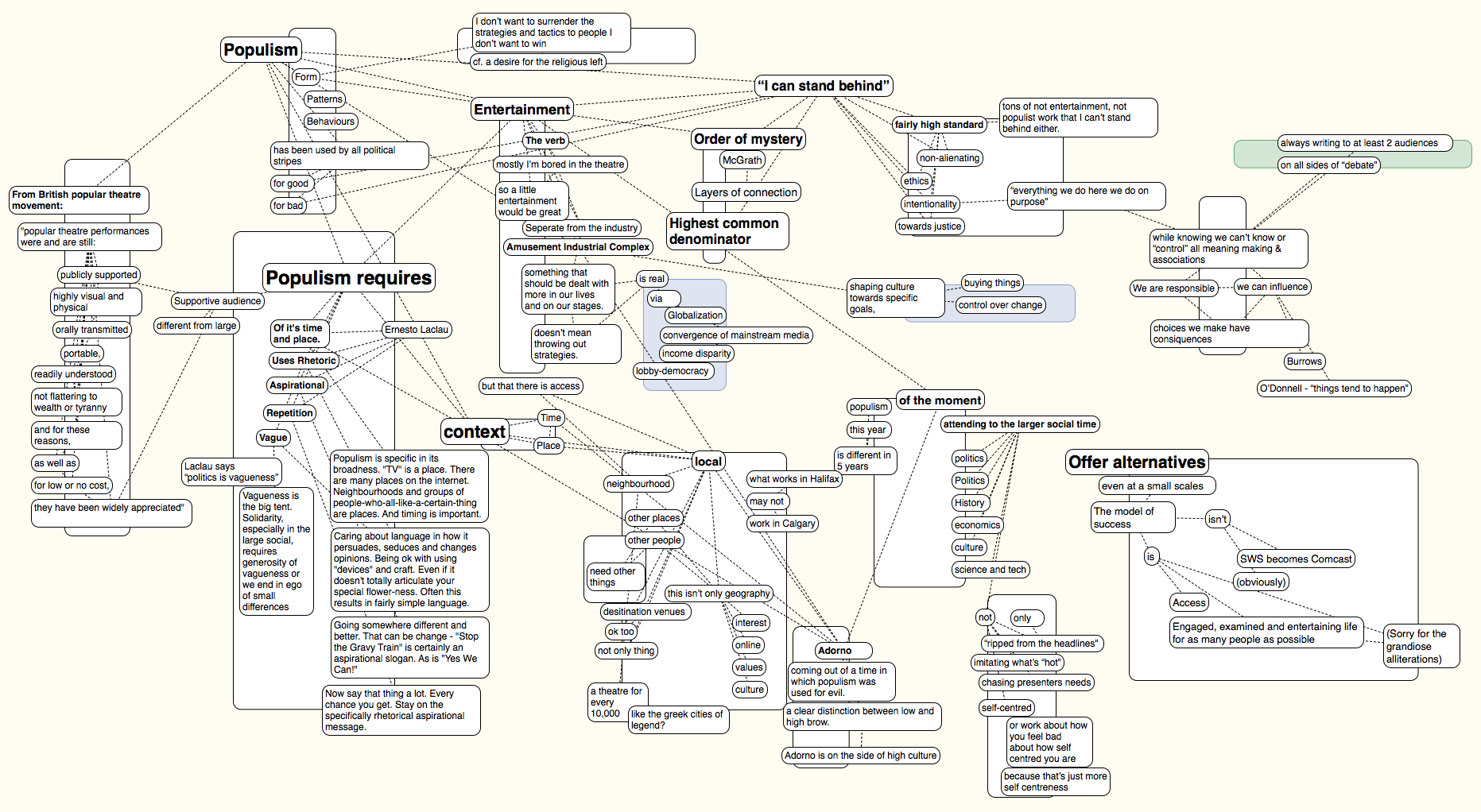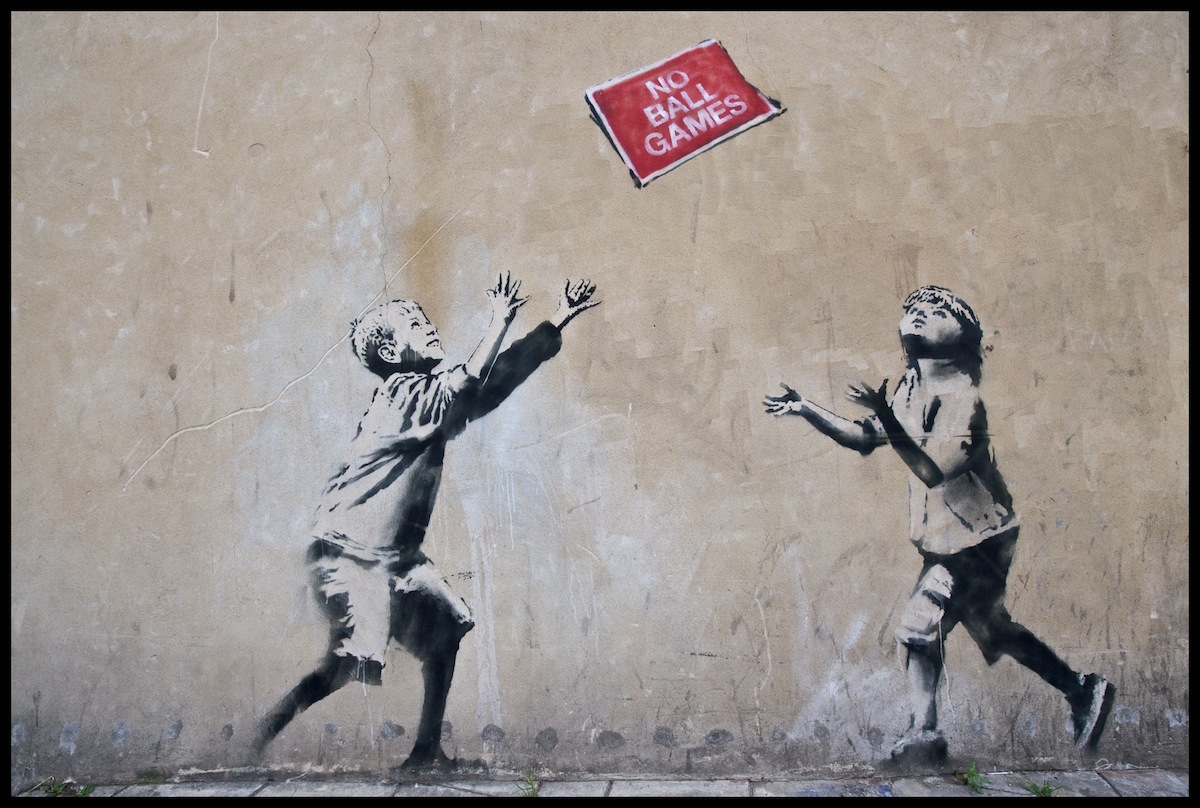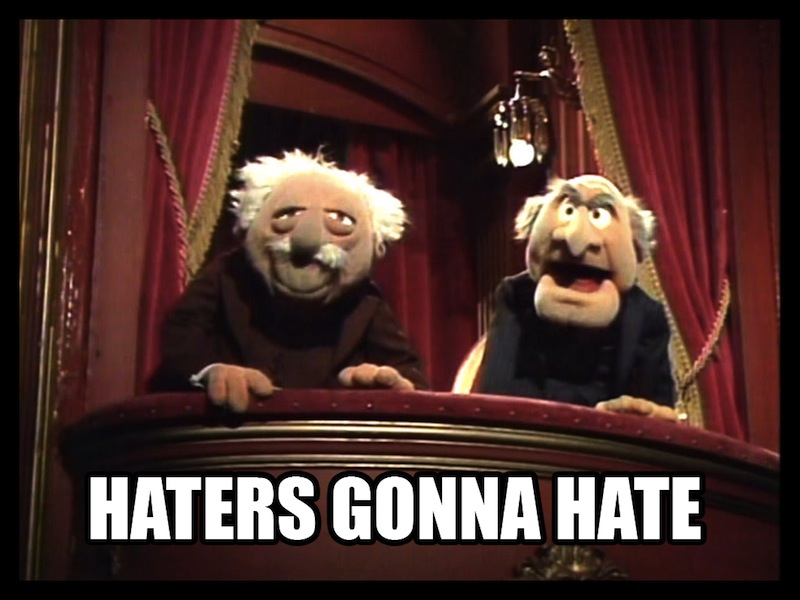Hitting the Small Time or Living The Dream
Everything was pointing to a successful career as a theatre artist, an Actor with capitol A…so what was I doing this past Friday night, May 29, at the ripe age of 41?: Changing into my costume in the basement of an art gallery cum café in Invermere, a tiny town deep in the interior of BC, while a mere 15 patrons awaited the start of my show. How did I get here?
Mike Daisey achieves some praxis
Mike Daisey had a pretty significant impact on my theatre company for someone I have never met.
Could use some entertainment
For a while now I’ve been thinking and working from a question of finding “A populism I can stand behind.” These are hard days for populism – it’s getting called out for a lot. Specifically, a combination of the Fords (who are totally populist), Andrea Horwath’s campaign for the NDP and in “what’s wrong with Canadian theatre” conversations.
Towards a Dramaturgy of Resistance
In order to begin thinking about how to "revive" Canadian theatre, we must ask why we do it. In a world where theatre exists in the same capitalistic marketplace, and is a similar type of business venture as toy stores or restaurants, what is the theatre’s purpose? What has the theatre become in a world where anybody can choose theatre as their career and selling product?
OurStory
huff shines light on all manner of suffering and gives me the opportunity to reflect on how I can change what I do and how I think. I can make a new story or I can acknowledge that that there exists, already, a rich and difficult tale that needs to be known. It is called OurStory: A story of Canada.
Why the Canadian Arts Coalition doesn’t speak for me
My priorities as a citizen in a society far outweigh my priorities as a cultural worker. I cannot simply support a government for maintaining funding to programs I might access, while that government simultaneously dismantles major institutions, policies and programs that are vital to this country’s democratic, financial, environmental and cultural well-being.
Lead, Follow, or Get Out of the Way
In the 2002-2003 Toronto Season I was a Dora juror for the General Division and as such I took it upon myself to keep race stats on the 80 odd shows that I saw. Non-white performers came in at the 12-13% range. I suspect that if you did the same study today you would find just about the same percentage and only that high because of the culturally diverse theatres that sprang up and are still producing.
Kicking and Screaming: Dragging criticism into the 21st Century
Like in the performing arts industry, there is a hierarchal structure in theatre criticism. But there’s a twist: only a handful of full-time, “legitimate” jobs exist across the country, and with journalism in the state it’s in, it’s unclear whether those positions will exist when their current fillers depart.
Let’s get critical
The way we experience art is shaped by what we are taught in our childhoods, in our communities of origin, and through our embodied experiences.
The increasingly permeable divide between artists and critics
When we started the Praxis blog in 2006 it had one golden rule: No reviews.
We felt as artists we wanted to communicate with and about other artists. If the site passed judgment on artistic merit of our colleagues' work, we would always be outsiders. This seemed antithetical to our aims.
















